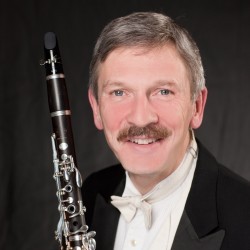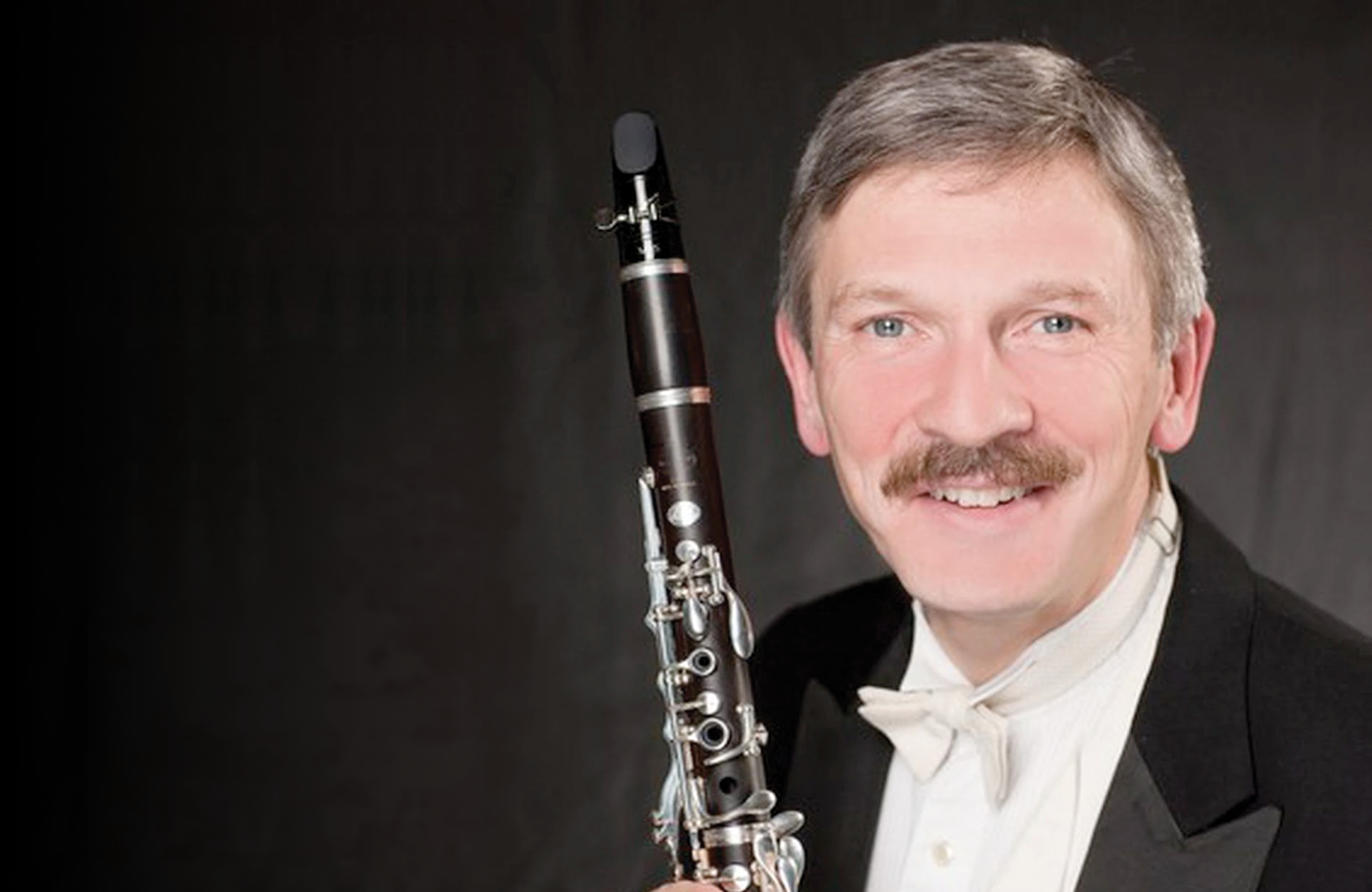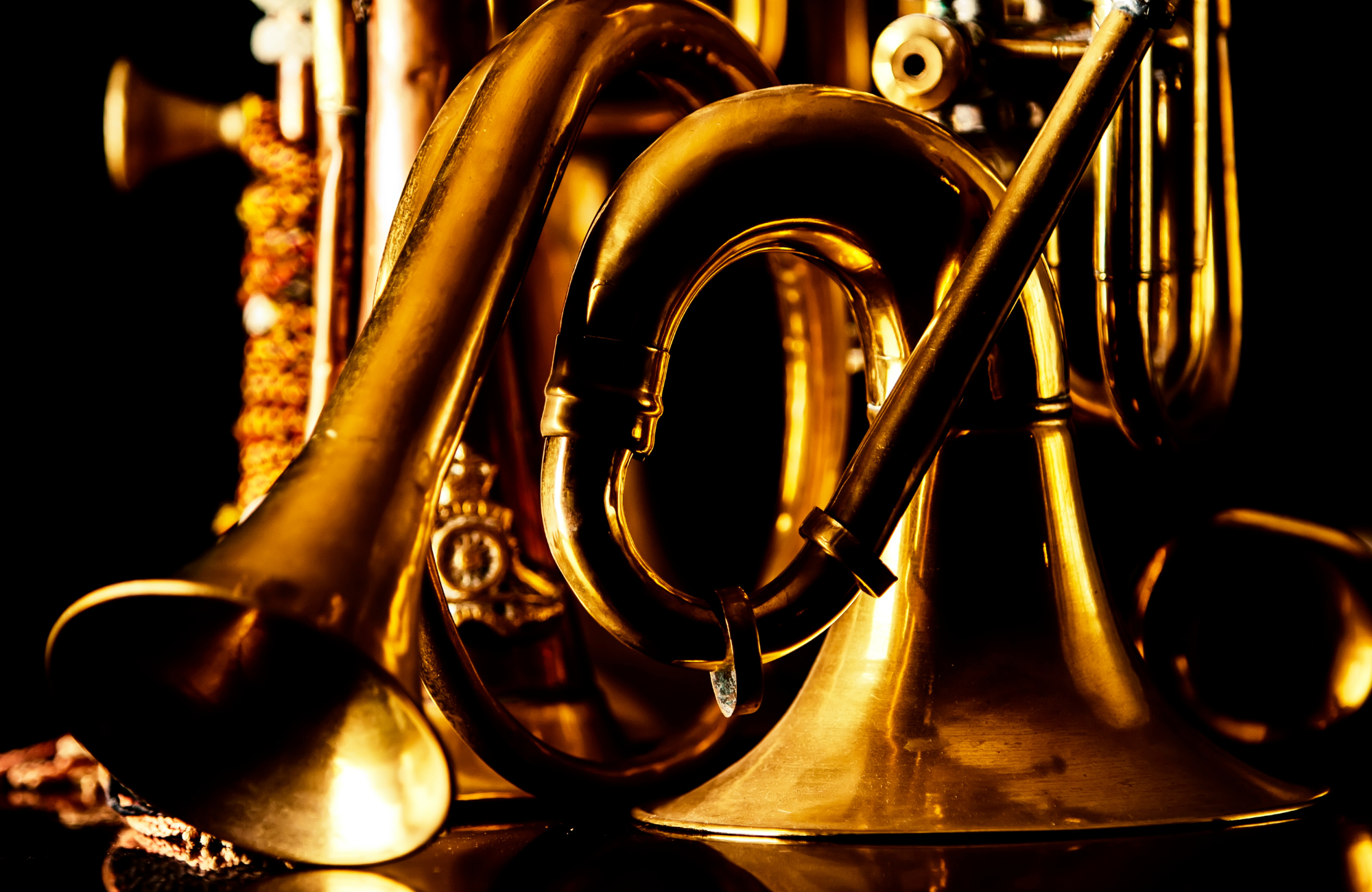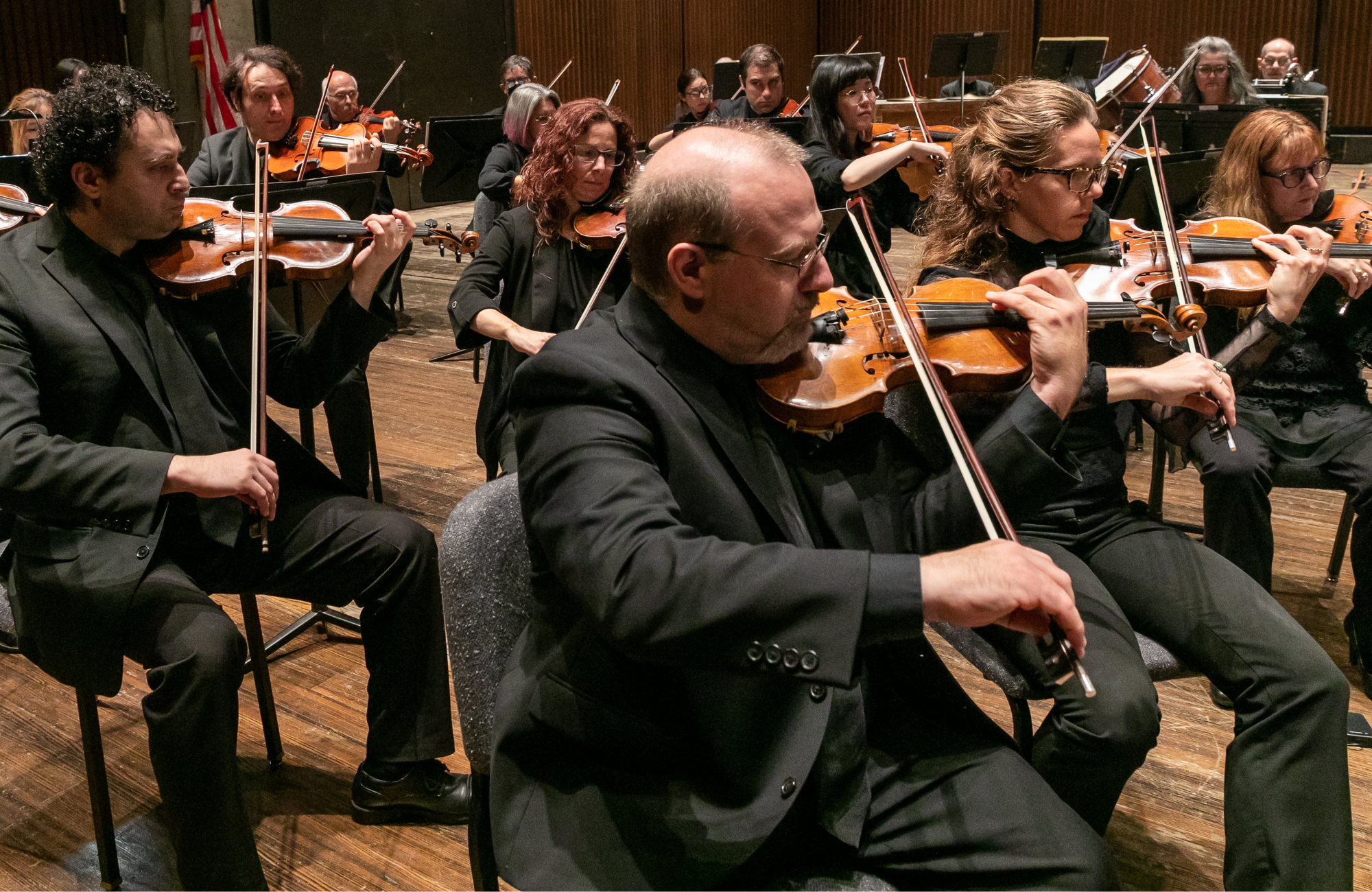Symphoria’s Casual Series kicks off with Mozart’s most famous work, Eine Kleine Nachtmusik (A Little Night Music) and Foote’s second movement Air from Serenade in E Major. Symphoria’s principal clarinet, Allan Kolsky performs Copland’s Concerto for Clarinet, which was written for jazz clarinetist Benny Goodman . Tchaikovsky’s expressive Serenade for Strings in C Major is sure to end the concert on the right note.
PROGRAM
MOZART: Eine kleine Nachtmusik (Serenade, K.525) ![]()
COPLAND: Concerto for Clarinet ![]()
FOOTE: Serenade in E Major, Op. 25: II. Air
TCHAIKOVSKY: Serenade in C Major, Op. 48 ![]()
Thanks to our sponsors!
PROGRAM NOTES
The title of today’s concert, “A Little Afternoon Music,” is a nod to our opener, Eine
kleine Nachtmusik (“A Little Night Music”) by Wolfgang Amadeus Mozart (1756–1791), a
composer whose spirit, in various ways, illuminates the entire program. Eine kleine Nachtmusik,
the nickname Mozart gave to his Serenade in G, K. 525, was composed in the summer of 1787.
At the time, the term “serenade” referred to a light piece, suitable for evening use as background music for a social event, like a dinner or a wedding—and while this work fits the description, it surely transcends ...
The title of today’s concert, “A Little Afternoon Music,” is a nod to our opener, Eine
kleine Nachtmusik (“A Little Night Music”) by Wolfgang Amadeus Mozart (1756–1791), a
composer whose spirit, in various ways, illuminates the entire program. Eine kleine Nachtmusik,
the nickname Mozart gave to his Serenade in G, K. 525, was composed in the summer of 1787.
At the time, the term “serenade” referred to a light piece, suitable for evening use as background music for a social event, like a dinner or a wedding—and while this work fits the description, it surely transcends the genre. In the hands of lesser composers of the period, such occasional works were generally heard (or half-heard) and quickly forgotten. In contrast, Mozart’s best serenades—this one in particular—are so melodically charismatic and formally elegant that they repay careful and repeated listening. There’s another aspect of Mozart’s genius represented here, too. Eine kleine Nachtmusik was written in the summer of 1787. At the time, Mozart was working on Don Giovanni, his darkest and most serious opera—and his father had just died in the spring. But Mozart could switch gears more quickly than just about any other composer, and there’s no trace of darkness or pain in this work.
Eine kleine Nachtmusik is probably the most beloved work for strings from the late 18th-
century; the Serenade in C, op. 48, composed by Peter Ilyich Tchaikovsky (1840–1893) in
1880, has the same standing for the late 19th century. And since it was composed under the spell of Mozart, Tchaikovsky’s favorite composer, it seemed an apt choice to end the concert. Don’t, however, expect a neo-classical impersonation: Mozartian inspiration did not lead to Mozartian imitation. Yes, Tchaikovsky was adept at mimicking the past when he wanted to. His Rococo Variations have an 18th-century sensibility, and his Fourth Orchestral Suite, titled “Mozartiana,” is a set of orchestral adaptations of Mozart originals. The Serenade, though, inhabits a different world; while it honors the enduring inspiration of Mozart, it also reminds us of how much things had changed during the intervening century.
This is a deeply romantic work. Tchaikovsky achieves a much bigger sonority, right from
the introduction, by asking each string player to play two, three or even four
notes simultaneously (a technique known as “multiple stops”). The Serenade also features the
exceptionally wide dynamic range and the heart-on-the-sleeve emotionality that marks his
symphonies. The proper minuet and trio of the Mozart has been replaced by a suave and
suggestive waltz (placed as the second movement, rather than the third), a match for any waltz in Tchaikovsky’s ballets; and the restrained Romance of the Mozart has been supplanted by a
heartfelt Elegy. The use of folk tunes in the finale is another mark of the times, when the
romantic ethos often found itself caught up in nationalism. In addition, the work displays the
kind of thematic connections among movements championed by many romantic
composers—most obviously in the return of the opening music at the end of the piece.
In between these staples we have two works that are less familiar—radically less familiar
in the case of the Air from the 1891 Serenade in E by Arthur William Foote (1853–1937).
Foote was one of the ground-breaking pioneers of American classical music. Claimed as the first
to be trained in the United States rather than in Europe (as Gottschalk, MacDowell, and even
Copland were), he got the first Master’s Degree in Music ever awarded in this country. He went
on to become one of the so-called Boston Six, a group of the most prominent East Coast
composers of the time. Yet, paradoxically, his music is solidly grounded in the European
tradition. He had special affection for Mozart, calling his Symphony No. 40 “one of the most
perfect things in existence.” He championed Mozart in his collections for beginning pianists and
edited nine of his piano sonatas. Still, his own idiom was generally more attuned to the later
romantics than to earlier music.
Generally—but not always, and his Serenade looks backwards to a degree that
Tchaikovsky’s does not. Indeed, the Air looks back even beyond Mozart. Foote’s love of Bach
led him to transcribe a fair amount of Bach for piano—and that same love is evident here, since
the Air, with its steady and stately bass line, is clearly modelled on the Air from Bach’s Third
Orchestral Suite. (By the way, Mahler’s version of Bach’s Air will appear as part of the Bach-
Mahler Suite we’ll be offering at our next Casual). Yet this is no simple pastiche, and in the B
section, there’s a kind of desolate intensity that reminds us that Foote was one of Wagner’s early advocates in the United States. He especially admired Die Meistersinger, and it’s not hard to find traces of its third act prelude here.
Aaron Copland (1900 –1990) did not have the same attachment to Mozart that Foote
—much less Tchaikovsky—did. Still, there’s a deep, if circuitous, Mozart connection to his 1948
Concerto for Clarinet. A bit of history: In 1938, jazz clarinetist Benny Goodman reached a
milestone in his career when he mounted the first jazz concert ever offered in Carnegie
Hall—with a racially integrated group of musicians, too. But at about the same time, an
invitation to join an impromptu group to play Mozart encouraged him to expand his horizons and to embark on a parallel career as a classical performer. Just a few months after the Carnegie event, he made his classical debut in Town Hall with the Budapest Quartet—once again playing Mozart. Mozart remained central to his repertoire. But ever the explorer, he not only took on established works by composers like Weber, Busoni, and Nielsen, but also expanded the repertoire by premiering new works (including Stravinsky’s Ebony Concerto) and by commissioning others from composers like Bartók, Hindemith, and Morton Gould. His
commission of the Copland Concerto was arguably his most important.
The concerto upends expectations in several ways. Most concertos have three
movements; this one has two, which are linked. Most begin with a fast movement introducing
the soloist’s virtuoso prowess; this opener, marked “slowly and expressively,” mines the
nostalgic lyricism familiar from such Copland standards as Appalachian Spring—just what
you’d expect of a middle movement. Most concertos have cadenzas (passages for the soloist to
play alone) interrupting one or more of the movements; this one places the cadenza between
movements, where it serves as a transition rather than an interruption. Only when we get to the upbeat finale does the concerto hew to formal traditions. Even here, the presence of jazz, given extra edge by the presence of a piano in the string-and-harp orchestra, makes it clear that this is no standard concerto. The finale also borrows from the music Copland heard in Latin America, where he was touring when he started composing the piece.
Both the cadenza and the last movement offer plenty of technical fireworks—but there
are subtler challenges for the soloist throughout the piece. As today’s performer, principal
clarinet Allan Kolsky, points out, the first movement “demands great sensitivity, control and
delicacy of tone.” And while the cadenza offers the soloist great freedom of interpretation, that also presents a challenge in pacing, “how to introduce new musical ideas, or how to build and release tension in preparation for the final movement.”
The concerto is fairly short—well under 20 minutes—but its range is wide. “Copland
brings out so many special qualities of my instrument,” says Allan—“ the lyricism, the jazziness,
the humor, the virtuosity, and some moments of real emotional intensity, as well.” As a great
admirer of both Copland and Goodman (in fact, an autographed photo of Goodman hangs in his
studio), Allan is especially eager to share this work with us today. I think you’ll understand why
after you hear the performance.
Peter J. Rabinowitz
Have any comments or questions? Please write to me at prabinowitz@ExperienceSymphoria
FEATURED ARTISTS

Principal Clarinet of Symphoria, Allan Kolsky was born in Providence R.I., and held positions with the Louisiana Philharmonic and the Utah Symphony before joining the Syracuse Symphony as Principal Clarinet in 2002. He has appeared as soloist with both Symphoria and the SSO in clarinet concertos by Mozart, Nielsen, ...
Principal Clarinet of Symphoria, Allan Kolsky was born in Providence R.I., and held positions with the Louisiana Philharmonic and the Utah Symphony before joining the Syracuse Symphony as Principal Clarinet in 2002. He has appeared as soloist with both Symphoria and the SSO in clarinet concertos by Mozart, Nielsen, Finzi and
Weber. He has also performed with the Cincinnati Symphony, the North Carolina Symphony, the Buffalo Philharmonic, the Chautauqua Symphony, the Skaneateles Festival, Glimmerglass Opera and the Colorado Music Festival. In local recitals and chamber music, he has performed for Syracuse Friends of Chamber Music, Joyful
Noise, and Syracuse OASIS. Civic Morning Musicals awarded him the 2011 CMM Award for Excellence in Music Performance in Central New York.
Mr. Kolsky holds music performance degrees from Temple and DePaul Universities, where he studied with Anthony Gigliotti (Principal Clarinet of the Philadelphia Orchestra) and Larry Combs (Principal Clarinet of the Chicago Symphony). His early teachers included Pasquale Cardillo and Frank Marinaccio. As a student, Kolsky won a Tanglewood Fellowship, performed with the Civic Orchestra of Chicago, and played in master classes coached by Robert Marcellus, David Shifrin and Harold Wright.
A co-host and featured performer at the 2001 conference of the International Clarinet Association, Kolsky taught clarinet for several years at the University of New Orleans. He currently teaches at both Hamilton College and Onondaga Community College as an adjunct Lecturer in Clarinet.
In addition to music, Allan loves great literature, and his humorous, 500-word parody of William Faulkner’s “The Sound and the Fury” won the international 2001 Faux Faulkner Contest. He has also acted in several community Shakespeare productions with the Syracuse Shakespeare Festival. Allan is married to Ellen Somers, the Assistant Director of Syracuse Jewish Family Service.

Described as bringing an “artisan storyteller’s sensitivity… shaping passages with clarity and power via beautifully sculpted dynamics… revealing orchestral character not seen or heard before” (Arts Knoxville) Lawrence Loh enjoys a dynamic career as a conductor of orchestras all over the world.
After an extensive two ...
Described as bringing an “artisan storyteller’s sensitivity… shaping passages with clarity and power via beautifully sculpted dynamics… revealing orchestral character not seen or heard before” (Arts Knoxville) Lawrence Loh enjoys a dynamic career as a conductor of orchestras all over the world.
After an extensive two year search, Lawrence Loh was recently named Music Director of the Waco Symphony Orchestra beginning in the Spring of 2024. Since 2015, he has served as Music Director of The Syracuse Orchestra (formerly called Symphoria), the successor to the Syracuse Symphony Orchestra. “The connection between the organization and its audience is one of the qualities that’s come to define Syracuse’s symphony as it wraps up its 10th season, a milestone that might have seemed impossible at the beginning,” (Syracuse.com) The Syracuse Orchestra and Lawrence Loh show that it is possible to create a “new, more sustainable artistic institution from the ground up.”
Appointed Assistant Conductor of the Pittsburgh Symphony in 2005, Mr Loh was quickly promoted to Associate and Resident Conductor within the first three years of working with the PSO. Always a favorite among Pittsburgh audiences, Loh returns frequently to his adopted city to conduct the PSO in a variety of concerts. Mr. Loh previously served as Music Director of the West Virginia Symphony Orchestra, Music Director of the Northeastern Pennsylvania Philharmonic, Artistic Director and Principal Conductor of the Syracuse Opera, Music Director of the Pittsburgh Youth Symphony Orchestra, Associate Conductor of the Dallas Symphony Orchestra, Associate Conductor of the Colorado Symphony Orchestra and Music Director of the Denver Young Artists Orchestra.
Mr. Loh’s recent guest conducting engagements include the San Francisco Symphony, Dallas Symphony, North Carolina Symphony, Baltimore Symphony, Sarasota Orchestra, Florida Orchestra, Pensacola Symphony, Atlanta Symphony, National Symphony, Detroit Symphony, San Diego Symphony, Seattle Symphony, National Symphony (D.C.), Utah Symphony, Rochester Philharmonic, Indianapolis Symphony, Calgary Philharmonic, Buffalo Philharmonic, Albany Symphony and the Cathedral Choral Society at the Washington National Cathedral. His summer appearances include the festivals of Grant Park, Boston University Tanglewood Institute, Tanglewood with the Boston Pops, Chautauqua, Sun Valley, Shippensburg, Bravo Vail Valley, the Kinhaven Music School and the Performing Arts Institute (PA).
As a self-described “Star Wars geek” and film music enthusiast, Loh has conducted numerous sold-out John Williams and film music tribute concerts. Part of his appeal is his ability to serve as both host and conductor. “It is his enthusiasm for Williams’ music and the films for which it was written that is Loh’s great strength in this program. A fan’s enthusiasm drives his performances in broad strokes and details and fills his speaking to the audience with irresistible appeal. He used no cue cards. One felt he could speak at filibuster length on Williams’ music.” (Pittsburgh Tribune)
Mr Loh has assisted John Williams on multiple occasions and has worked with a wide range of pops artists from Chris Botti and Ann Hampton Callaway to Jason Alexander and Idina Menzel. As one of the most requested conductors for conducting Films in Concert, Loh has led Black Panther, Star Wars (Episodes 4-6), Jaws, Nightmare Before Christmas, Jurassic Park, Casablanca, The Wizard of Oz and Singin’ in the Rain, among other film productions.
Lawrence Loh received his Artist Diploma in Orchestral Conducting from Yale, his Masters in Choral Conducting from Indiana University and his Bachelor of Arts from the University of Rochester. Lawrence Loh was born in southern California of Korean parentage and raised in Carlisle, Pennsylvania. He and his wife Jennifer have a son, Charlie, and a daughter, Hilary. Follow him on instagram @conductorlarryloh or Facebook at @lawrencelohconductor or visit his website, www.lawrenceloh.com





